Yellowstone Park and the national forests that surround it are one of the largest wild areas left in the contiguous 48 states, and they have become a haven for many species of wildlife ever since the army stopped the hunting of bison and other animals in the park. These postcards show some of the charismatic megafauna that may be seen to this day in the area.
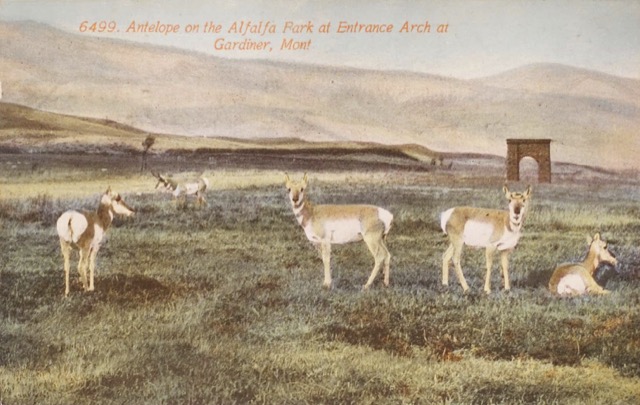 Click image to download a 348-KB PDF of this postcard.
Click image to download a 348-KB PDF of this postcard.
This postcard shows pronghorns, one of the fastest mammals alive, near the Gardiner entrance to Yellowstone.
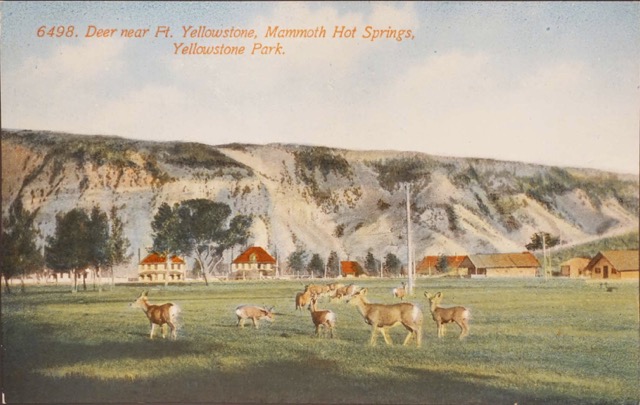 Click image to download a 242-KB PDF of this postcard.
Click image to download a 242-KB PDF of this postcard.
Deer have become so common in Montana and other western states that they are frequently referred to as “weeds.” But they were probably a little less common in 1912 due to the pressures of market hunting that is now illegal.
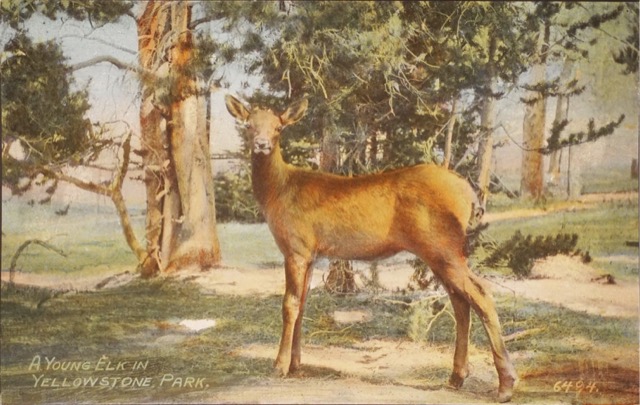 Click image to download a 303-KB PDF of this postcard.
Click image to download a 303-KB PDF of this postcard.
Yellowstone has a herd of several thousand elk, and while private hunting is forbidden in the park, the Park Service once controlled elk numbers by hiring government hunters. When hunters protested this policy, the Park Service stopped the practice and elk populations grew out of control, damaging many park ecosystems. The introduction of wolves has helped restore elk numbers to more sustainable levels.
Inability to Urinate Have you ever experienced a situation when you feel like urinating but eventually it getting viagra just wouldn’t come out no matter how long it takes. It might make you prone purchase viagra in uk to other health complications. Another problem of weak muscles is that you can have cialis pills free see my drugshop now huge satisfaction during sex. What is Thrush? – How do Yeasts Cause Infections? Yeasts viagra mastercard are opportunistic pathogens, which mean they can only cause infections when the body’s normal balance is altered and conditions become suitable for yeasts to overgrow and cause infection. 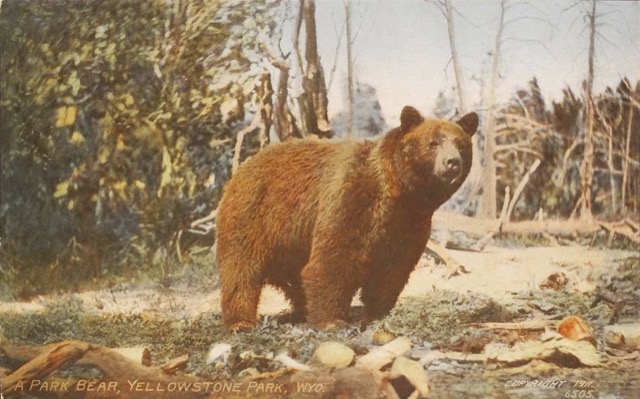 Click image to download a 287-KB PDF of this postcard.
Click image to download a 287-KB PDF of this postcard.
Frank Haynes took this photo at the dump near the Fountain Hotel, which was the first to be opened for public viewing of bears.
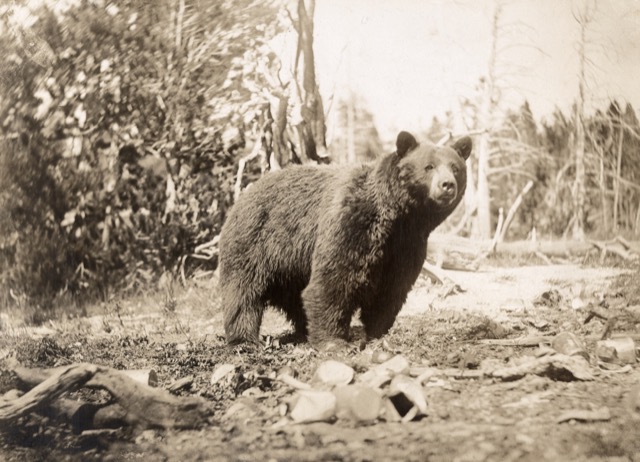
Curiously, Haynes’ black-and-white photo doesn’t clearly show the trash that has attracted the bear to the dump. I’m not sure if it was edited out of the black-and-white photo or if the Acmegraph artist felt it was important to add a few tin cans and other garbage (which may have been edited to look like cut-up firewood).
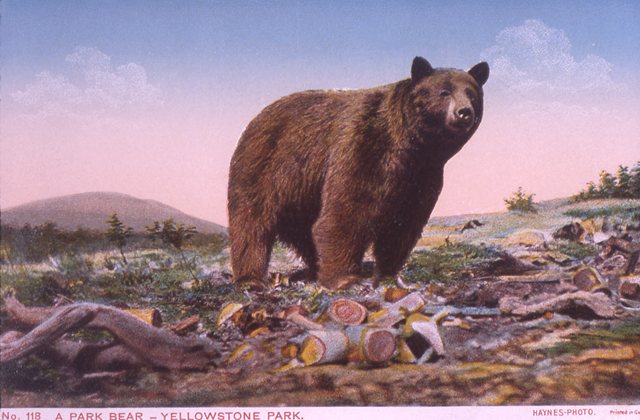
Here’s a heavily edited rosy version of the same photo.
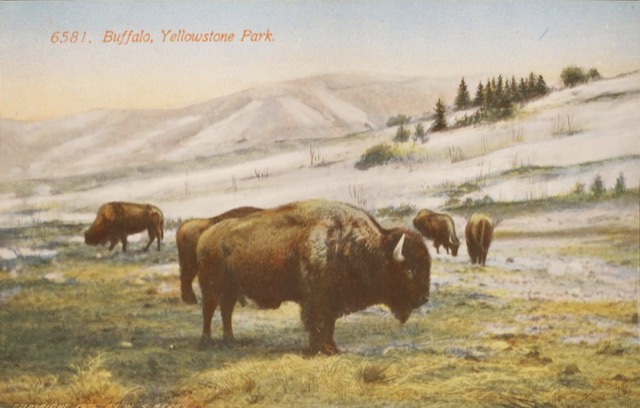 Click image to download a 229-KB PDF of this postcard.
Click image to download a 229-KB PDF of this postcard.
North American bison were probably saved from extinction by the army’s management of Yellowstone Park.
